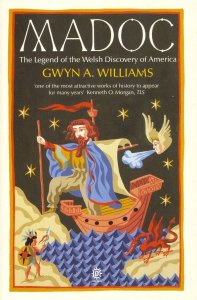
Download the free Kindle app and start reading Kindle books instantly on your smartphone, tablet, or computer - no Kindle device required.
Read instantly on your browser with Kindle for Web.
Using your mobile phone camera - scan the code below and download the Kindle app.

OK
Madoc: The Making of a Myth (Oxford Paperbacks) New Ed Edition
Gwyn Williams offers the first full-length analysis of the Madoc myth, including a full description of how and why the Elizabethans developed it. He explores, in depth, the "Madoc fever" that gripped both sides of the Atlantic in the 1790s, concentrating particularly on the rapid increase in Welsh immigrations to the United States that resulted from the rush to discover the lost tribe of white, Welsh-speaking Indians left behind by Madoc. This unique work of historical detection not only recovers the factual origins of strange stories and influential beliefs, but also investigates how myth can actually create and shape history.
- ISBN-100192851780
- ISBN-13978-0192851789
- EditionNew Ed
- PublisherOxford University Press
- Publication dateMarch 3, 1988
- LanguageEnglish
- Dimensions5.19 x 0.63 x 7.75 inches
- Print length240 pages
Editorial Reviews
About the Author
Gwyn Williams, retired Professor of history at Cardiff University, is the author of many books, including Artisans and Sans-Culottes, Antonio Gramsci, and When Was Wales.
Product details
- Publisher : Oxford University Press; New Ed edition (March 3, 1988)
- Language : English
- Paperback : 240 pages
- ISBN-10 : 0192851780
- ISBN-13 : 978-0192851789
- Item Weight : 6.3 ounces
- Dimensions : 5.19 x 0.63 x 7.75 inches
- Best Sellers Rank: #3,807,310 in Books (See Top 100 in Books)
- #4,685 in United States History (Books)
- #186,462 in Unknown
- Customer Reviews:
About the author

Discover more of the author’s books, see similar authors, read author blogs and more
Customer reviews
Customer Reviews, including Product Star Ratings help customers to learn more about the product and decide whether it is the right product for them.
To calculate the overall star rating and percentage breakdown by star, we don’t use a simple average. Instead, our system considers things like how recent a review is and if the reviewer bought the item on Amazon. It also analyzed reviews to verify trustworthiness.
Learn more how customers reviews work on Amazon-
Top reviews
Top reviews from the United States
There was a problem filtering reviews right now. Please try again later.
About how european bloodlines flowed into the Americas and possibly beyond into the vastness
of the Pacific.
While this remains a possibility the story of Madoc remains a myth. It is the journey of the idea
which makes this book so fascinating and readable.



